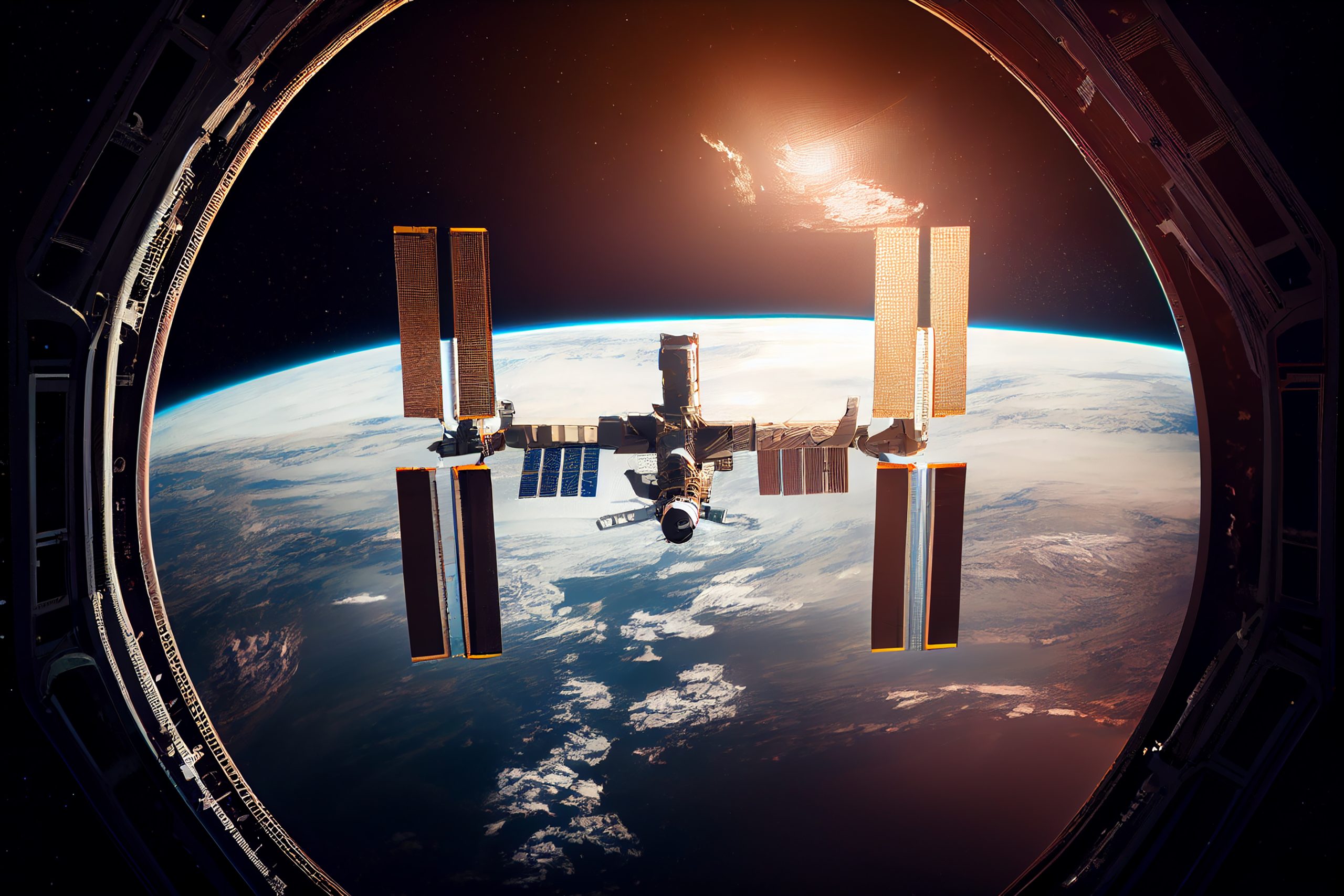
In years there have been advancements in satellite sensor technology which have revolutionized how we observe and comprehend our surroundings. With improvements in the quality of images and the range of data that can be captured by satellites there is now an ability to gather varied information than ever before. These enhancements go beyond producing images they signify a major step forward in capabilities across various fields such as environmental monitoring, disaster response, farming and national security. In this article we will delve into the progressions in satellite sensor technology and explore the impact of these developments.
What is Satellite Sensor Technology?
Satellite sensor technology utilizes tools placed on satellites to gather information, about the Earth’s surface and atmosphere.They collect a range of data such, as images and thermal readings that are then studied for understanding events and human impacts.The quality of satellite sensors is largely influenced by their ability to produce images and capture wavelengths of light.
Satellites are outfitted with technologies designed for observation purposes optical sensors that collect visible light to produce photo like images and radar sensors that utilize radio waves to identify objects and calculate distances even, in cloudy or dark conditions; thermal sensors detect infrared radiation to spot temperature variations useful for monitoring heat distributions, like urban heat islands or forest fires. The flexibility of satellite sensor technology enables it to serve purposes such as predicting weather patterns and studying climate changes or aiding in planning and military intelligence gathering; delivering essential information, for decision makers in different fields.
The Evolution of Image Resolution in Satellite Technology
1. From Low to High Resolution: A Historical Perspective
In the past, satellite sensors had image quality so the details in the photos they took were not clear and hard to understand at times. Now there have been big improvements made and current satellites have better resolution capturing images with a ground sample distance of 30 cm or even better which helps in spotting small objects, like cars buildings and even single trees leading to new analysis opportunities and better decision making.
2. The Impact of Higher Resolution on Various Industries
High quality images have made an impact on sectors like farming technology and urban development as well as defense strategies in recent years. For instance , being able to spot changes in crop health using detailed images allows farmers to promptly decide on watering schedules, nutrient applications and pest management practices. When it comes to planning the use of high resolution satellite pictures empowers city planners to oversee growth and evaluate land usage. Design new infrastructure ventures more precisely.
3. Super-Resolution Techniques: Pushing the Boundaries Further
Lately there have been some techniques developed that can improve the quality of satellite images beyond what the sensors themselves can capture by utilizing machine learning algorithms known as resolution methods. These methods work by enhancing details, from lower resolution data to offer images with more precise monitoring capabilities, for small scale events and features.
Enhancing Spectral Capabilities for More Comprehensive Data Collection
1. The Shift from Multispectral to Hyperspectral Imaging
For years, in satellite remote sensing technology lots of attention has been given to multispectral imaging which captures data in a few spectral bands (usually between 4 to 12). On the contrary hyperspectral imaging is capable of collecting data across spectral bands.This expanded capability permits the detection of minute differences in materials and substances that may not be apparent in images.As a result hyperspectral sensors can be deployed to recognize minerals supervise water quality and identify chemical spills, among useful applications.
2. Applications of Hyperspectral Imaging in Different Sectors
Imagings enhanced spectral resolution proves advantageous, in environmental surveillance and mineral exploration purposes specifically.Revealingly hyperspectral data enables the identification of contaminants in water sources distinguishing vegetation stress caused by diseases or lack of water and accurately mapping out mineral reserves.This meticulous level of information is incredibly valuable, for scientists and sectors depending on material data
3. The Role of Thermal Infrared Imaging in Remote Sensing
Thermal infrared sensors detect the warmth given off by objects, on the Earth’s surface. Offer information on temperature discrepancies and heat dispersion patterns.Its significance lies in tasks like wildfire monitoring city heat island assessments. Research on behavior. Advancements in thermal sensor technology have led to increased detail and improved temperature detection precision resulting in precise thermal data output.
4. Expanding Capabilities with Shortwave Infrared (SWIR) Imaging
Shortwave infrared (SWIR) imaging is gaining significance, in satellite sensing as it can see through haze and smoke to offer images during challenging weather conditions in the atmosphere.. SWIR sensors collect data in wavelengths that reveal material properties like moisture content for tracking vegetation health and mapping soil features while evaluating water resources.With this ability, for analysis it aids in disaster response especially during wildfires or dust storms.
5. Advancements in Ultraviolet (UV) and Microwave Sensing
UV and microwave sensors bring a layer to collecting data from satellites by capturing details that go beyond what we can see. The infrared spectrum offers us. UV sensors are handy for spotting gasses in the atmosphere such as ozone and sulfur dioxide which are important for keeping track of air quality and assessing pollution levels.
The Integration of Artificial Intelligence and Machine Learning
1. Leveraging AI to Enhance Satellite Image Analysis
AI and machine learning methods are currently employed to automate the examination of satellite images where they have the ability to swiftly recognize patterns and changes while also forecasting trends through the analysis of data sets.This technology is demonstrated in applications such, as monitoring deforestation rates over time through image comparisons or automatically spotting mining operations and evaluating infrastructure damage caused by natural calamities.
2. Improving Data Processing Speeds with AI
AI speeds up the handling of satellite data well. In the past examining satellite images required analysis. Took a lot of time, thanks to AI powered tools data can be examined instantly enabling better decision making. This is especially crucial for emergency response operations, where swift access to data can make a difference, in saving lives and valuable resources.
3. Predictive Analytics and Forecasting with Satellite Data
Predictive analytics can be enhanced by utilizing machine learning models trained on satellite data to accurately forecast patterns, like agricultural yields or demographic changes in a comprehensive manner when integrated with various data sources.
Emerging Trends in Satellite Sensor Technology
1. Small Satellites and CubeSats: The Rise of Miniaturized Satellites
The advancement of satellites and cubesats has enabled the launch of satellite arrays at a reduced expense.The compact satellites provide versatility, in launch and deployment options resulting in data gathering and increased revisits.This proves to be advantageous for observing changing landscapes, like disaster stricken regions or areas experiencing growth.
2. The Growing Role of Commercial Satellites
Commercial satellite companies are increasingly influential, in the satellite image sector, by offering data to corporations and researchers. They are always striving to enhance image clarity and data accuracy to advance the capabilities of satellite based sensing technology.
3. The Advent of Quantum Remote Sensing
The realm of quantum sensing is, in its phases but shows great promise in transforming satellite sensing through the use of quantum technologies to enhance sensitivity and resolution capabilities significantly This innovative domain has the potential to gather data with finer details, beyond the reach of conventional sensor technology at present.
The Future of Satellite Sensor Technology
1. The Shift Towards Onboard Data Processing
One emerging trend in satellite technology involves onboard data processing; this means satellites can analyze data before sending it to Earth.This helps minimize the volume of data transmitted, result in reduced communication expenses and facilitate decision making processes.
2. Advances in Sensor Materials and Design
Exploring materials and sensor designs to improve the sensitivity and durability of satellite sensors is currently underway, with a focus placed onto potential advancements in nanotechnology and metamaterial technologies that may result in the creation of sensors, with enhanced efficiency and the ability to capture a wider array of data points.
3. The Potential of Multi-Sensor Fusion
By bringing together information, from sensor types like devices and radar technology, alongside thermal sensors can offer a broader understanding of the phenomena being observed.Marriage of sensor inputs through fusion techniques allows for the merging of data origins leading to more extensive datasets that enhance the precision of examinations and predictions.
Conclusion
With the continuous evolution of satellite sensor technology comes a world of opportunities, for enhancing Earth observation capabilities.At Envision Beyond we are dedicated to utilizing these progressions to provide top notch data that empowers decision making across various sectors.Our emphasis is placed firmly in using state of the art sensor technology and data analysis to keep our clients at the forefront of advancements in monitoring response, to disasters and management of resources.
Envision Beyond is committed to pushing the limits of satellite sensing technology and offering the resources and understanding necessary to enhance our comprehension of the world around us and take action based upon that knowledge. With a thinking perspective in mind we are ready to take the lead in converting satellite data into solutions, for a world that is constantly evolving.
